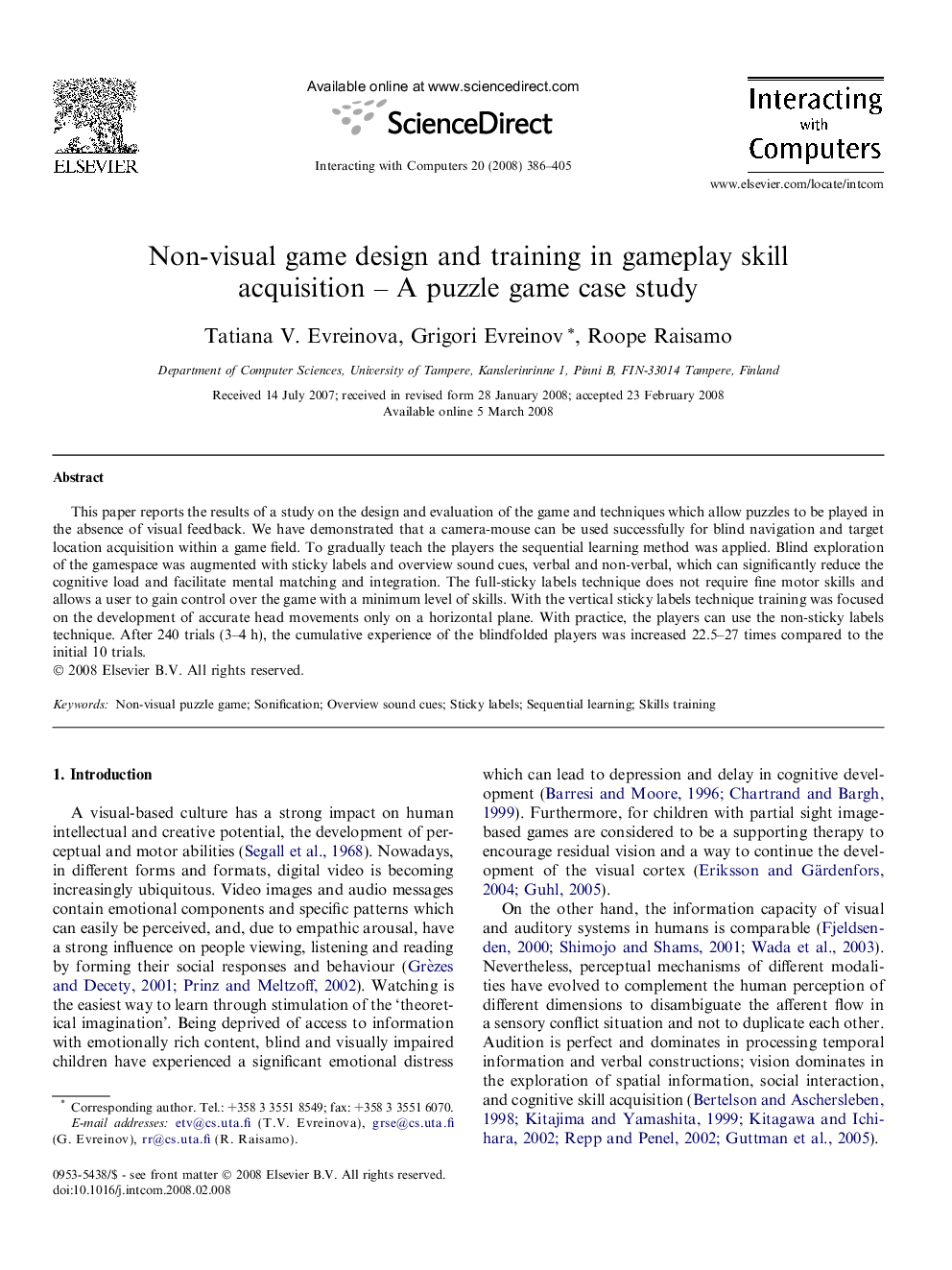| Article ID | Journal | Published Year | Pages | File Type |
|---|---|---|---|---|
| 551877 | Interacting with Computers | 2008 | 20 Pages |
This paper reports the results of a study on the design and evaluation of the game and techniques which allow puzzles to be played in the absence of visual feedback. We have demonstrated that a camera-mouse can be used successfully for blind navigation and target location acquisition within a game field. To gradually teach the players the sequential learning method was applied. Blind exploration of the gamespace was augmented with sticky labels and overview sound cues, verbal and non-verbal, which can significantly reduce the cognitive load and facilitate mental matching and integration. The full-sticky labels technique does not require fine motor skills and allows a user to gain control over the game with a minimum level of skills. With the vertical sticky labels technique training was focused on the development of accurate head movements only on a horizontal plane. With practice, the players can use the non-sticky labels technique. After 240 trials (3–4 h), the cumulative experience of the blindfolded players was increased 22.5–27 times compared to the initial 10 trials.
